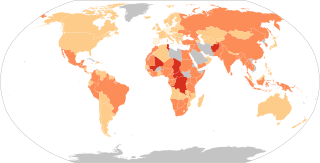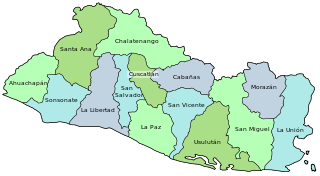Sexual violence is any harmful or unwanted sexual act or attempt to obtain a sexual act by violence or coercion, act to traffic a person, regardless of the relationship to the victim. This includes forced engagement in sexual acts, attempted or completed acts and occurs without the consent of the victim. It occurs in times of peace and armed conflict situations, is widespread, and is considered to be one of the most traumatic, pervasive, and most common human rights violations.

Commercial Sexual Exploitation of Children (CSEC) defines the “umbrella” of crimes and activities that involve inflicting sexual abuse on to a child as a financial or personal opportunity. Commercial Sexual Exploitation consists of forcing a child into prostitution, sex trafficking, early marriage, child sex tourism and any other venture of exploiting children into sexual activities. According to the Office of Juvenile Justice and Delinquency Prevention, the lack of reporting the crime and “the difficulties associated with identifying and measuring victims and perpetrators” has made it almost impossible to create a national estimate of the prevalence of Commercial Sexual Exploitation of Children in the United States. There is an estimated one million children that are exploited for commercial sex globally; of the one million children that are exploited, the majority are girls.

Sex trafficking is human trafficking for the purpose of sexual exploitation. It has been called a form of modern slavery because of the way victims are forced into sexual acts non-consensually, in a form of sexual slavery. Perpetrators of the crime are called sex traffickers or pimps—people who manipulate victims to engage in various forms of commercial sex with paying customers. Sex traffickers use force, fraud, and coercion as they recruit, transport, and provide their victims as prostitutes. Sometimes victims are brought into a situation of dependency on their trafficker(s), financially or emotionally. Every aspect of sex trafficking is considered a crime, from acquisition to transportation and exploitation of victims. This includes any sexual exploitation of adults or minors, including child sex tourism (CST) and domestic minor sex trafficking (DMST).

Violence against women (VAW), also known as gender-based violence and sexual and gender-based violence (SGBV), are violent acts primarily or exclusively committed by men or boys against women or girls. Such violence is often considered a form of hate crime, committed against women or girls specifically because they are female, and can take many forms.
Rape by gender classifies types of rape by the sex and gender of both the rapist and the victim. This scope includes both rape and sexual assault more generally. Most research indicates that rape affects women disproportionately, with the majority of people convicted being men; however, since the broadening of the definition of rape in 2012 by the FBI, more attention is being given to male rape, including females raping males.
Statistics on rape and other sexual assaults are commonly available in industrialized countries, and have become better documented throughout the world. Inconsistent definitions of rape, different rates of reporting, recording, prosecution and conviction for rape can create controversial statistical disparities, and lead to accusations that many rape statistics are unreliable or misleading.

Rape is a type of sexual assault involving sexual intercourse or other forms of sexual penetration carried out against a person without their consent. The act may be carried out by physical force, coercion, abuse of authority, or against a person who is incapable of giving valid consent, such as one who is unconscious, incapacitated, has an intellectual disability, or is below the legal age of consent. The term rape is sometimes used interchangeably with the term sexual assault.

One of the most common forms of sexual violence around the world is that which is perpetrated by an intimate partner, leading to the conclusion that one of the most important risk factors for people in terms of their vulnerability to sexual assault is being married or cohabiting with a partner. Other factors influencing the risk of sexual violence include:

As sexual violence affects all parts of society, the responses that arise to combat it are comprehensive, taking place on the individual, administrative, legal, and social levels.
Child sexual abuse (CSA), also called child molestation, is a form of child abuse in which an adult or older adolescent uses a child for sexual stimulation. Forms of child sexual abuse include engaging in sexual activities with a child, indecent exposure, child grooming, and child sexual exploitation, such as using a child to produce child pornography.

Human trafficking is the trade of humans for the purpose of forced labour, sexual slavery, or commercial sexual exploitation.

The Democratic Republic of the Congo, and the east of the country in particular, has been described as the "Rape Capital of the World", and the prevalence and intensity of all forms of sexual violence has been described as the worst in the world. Human Rights Watch defines sexual violence as "an act of a sexual nature by force, or by threat of force or coercion", and rape as "a form of sexual violence during which the body of a person is invaded, resulting in penetration, however slight, of any part of the body of the victim, with a sexual organ, or of the anal or genital opening of the victim with any object or other part of the body."
Human trafficking in Nepal is a growing criminal industry affecting multiple other countries beyond Nepal, primarily across Asia and the Middle East. Nepal is mainly a source country for men, women and children subjected to the forced labor and sex trafficking. U.S. State Department's Office to Monitor and Combat Trafficking in Persons placed the country in "Tier 2" in 2017.

Papua New Guinea (PNG) is often labelled as potentially the worst place in the world for gender-based violence.
Domestic violence is prominent in Nigeria as in other parts of Africa. There is a deep cultural belief in Nigeria that it is socially acceptable to hit a woman as a disciplinary measure. Cases of Domestic violence are on the high and show no signs of reduction in Nigeria, regardless of age, tribe, religion, or even social status. The CLEEN Foundation reports 1 in every 3 respondents identified themselves as a victim of domestic violence. The survey also found a nationwide increase in domestic violence in the past 3 years from 21% in 2011 to 30% in 2013. A CLEEN Foundation's 2012 National Crime and Safety Survey demonstrated that 31% of the national sample confessed to being victims of domestic violence.
Domestic violence in Kenya constitutes any harmful behavior against a family member or partner, including rape, assault, physical abuse, and forced prostitution. Domestic violence in Kenya reflects worldwide statistics in that women are the overwhelming majority of victims. Over 40% of married women in Kenya have reported being victims of either domestic violence or sexual abuse. Worldwide, over 30% of "ever-partnered women" aged 15 and older have experienced physical or sexual partner violence. The distinct factors and causes of this high percentage have often not been studied due to lack of data.
Child sexual abuse in Nigeria is an offence under several sections of chapter 21 of the country's criminal code. The age of consent is 18.

Sex trafficking in the United States is a form of human trafficking which involves reproductive slavery or commercial sexual exploitation as it occurs in the United States. Sex trafficking includes the transportation of persons by means of coercion, deception and/or force into exploitative and slavery-like conditions. It is commonly associated with organized crime.
Cybersex trafficking, live streaming sexual abuse, webcam sex tourism/abuse or ICTs -facilitated sexual exploitation is a cybercrime involving sex trafficking and the live streaming of coerced sexual acts and/or rape on webcam.

Sex trafficking in El Salvador is human trafficking for the purpose of sexual exploitation and slavery that occurs in the Republic of El Salvador. It is a country of origin, transit, and destination for sexually trafficked persons.








